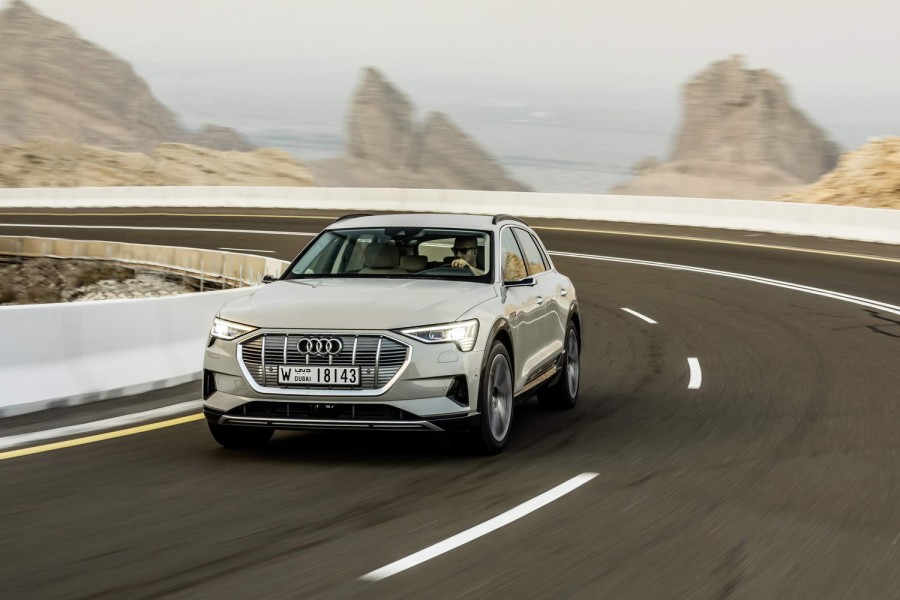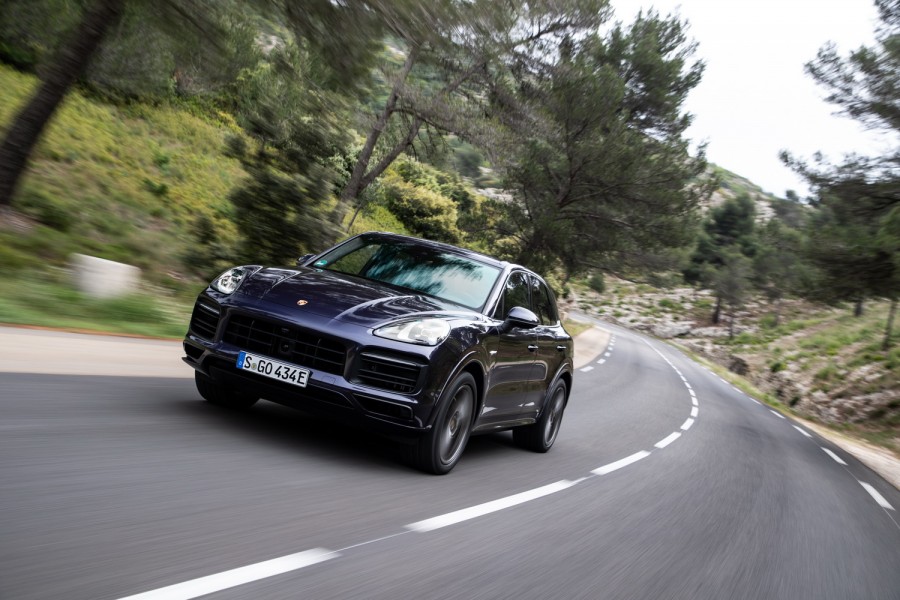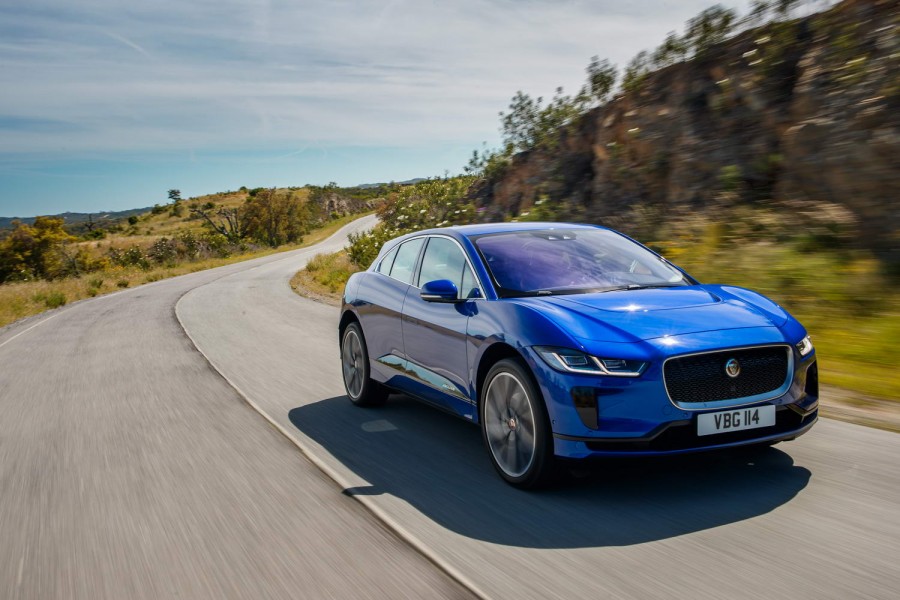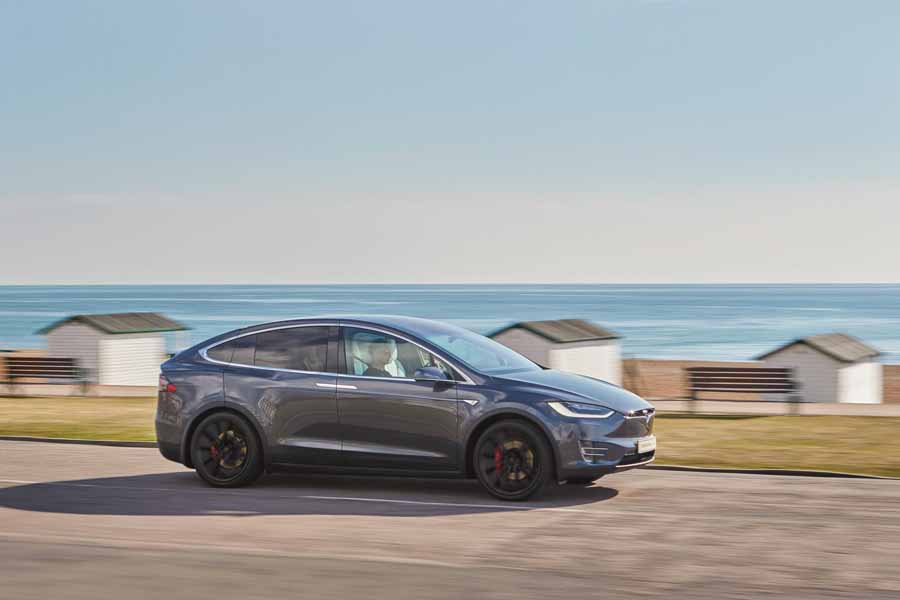The 2019 Audi e-tron is the company's first fully electric production car. It's set to compete with a growing number of EV rivals. The SUV form will appeal to a wide audience and the modern but conventional styling is unlikely to draw many detractors. It looks every bit the premium product that we've come to expect from Audi. So, can it deliver on the important fronts where drivability and performance are concerned?
In the metal
There are two apparent schools of thought when it comes to the styling of electric vehicles. Go all out and make it look bold and futuristic to highlight its electrified underpinnings, much like the original Nissan Leaf, and more recently the BMW i3 and Jaguar I-Pace has done, or offer something that looks more reserved, nee conventional, as the Tesla Model S and Volkswagen e-Golf do.
The e-tron definitely falls into the latter camp, and we see that as no bad thing. It's still far from boring to look at, standing out from other models in Audi's expansive range. Measuring in at 4,901mm long, it sits between the Audi Q5 and Q7 SUVs, with a long wheelbase adding to the space inside for passengers.
Even though it may look like a conventional SUV, the boffins in Audi have made the e-tron as slippery through the air as possible to help boost its driving range. The front grille is mostly closed off, for example, but can open louvres behind to help cooling, such as during more enthusiastic periods of driving. The air suspension can also lower the car at speed to maximise its aerodynamic efficiency.
One of the talking points on the e-tron is the option of cameras in place of traditional door mirrors. The high-resolution cameras are designed to work in all light conditions, relaying a feed to colour OLED touch-sensitive display screens at the top corner of each of the front doors. It is also possible to adjust the display as you might with the positioning of mirrors, including zoom levels. Blind spot warnings and indicator signals are integrated into the displays.
Apart from seeming quite futuristic, the main benefit is that they are much smaller than conventional mirrors, which are one of the larger causes of aerodynamic drag and wind noise in modern cars. Audi claims that these Virtual Mirrors can also add a handful of extra kilometres to the overall driving range.
The rest of the cabin is familiar Audi fare, and it continues the multi-display layout as seen on the Audi A6 through to A7, A8 and Q8 models. A 12.3-inch Virtual Cockpit display shows all the usual driving instruments in digital form, along with mapping and is complemented by an optional head-up display. All models get a 10.1-inch main infotainment system is paired with a second 8.6-inch display with haptic feedback.
As it's electric there is more space inside the cabin, both for passengers and oddments. A useful storage area between the front seats is reasonably deep and contains two cupholders along with a wireless mobile charging pad. In the rear, legroom is generous, and headroom is unlikely to pose any issues either.
At the core of the e-tron is its 95kWh battery that lies in the floor of car. Not only does it act as the power source, it also serves as part of the car's crash structure. Weighing close to 700kg, it accounts for a significant chunk of the e-tron's substantial weight, which tips the scales at 2,490kg. There are battery charge points on both sides of the cars on the wing at the leading edge of the door. A flush button opens them and one of the sides is a CCS-type port capable of charging at 150kW.
The e-tron is the first production car to offer 150kW charging, meaning that it can recharge to 80 per cent capacity in 30 minutes in the right conditions. The battery in the e-tron is thermally managed, which allows for frequent rapid charging if required without adversely affecting the battery. These fast chargers are being rolled out across Europe as part of the IONITY network, but the e-tron will also be compatible with all existing public charging infrastructure in Ireland. Home charging will be available at 11kW and optionally up to 22kW depending on your own arrangement.
The larger of the car's two electric motors sits over the rear axle, but boot space remains a useful 605 litres and is expandable to 1,755 litres. The standard fit alloy wheel is a 20-inch design with larger wheels available optionally.
Driving it
What may surprise some is that the Audi e-tron isn't a blisteringly fast electric SUV, and you won't find any novelty-named launch control modes here either. It does serve up a total of 408hp, but in general driving there is 360hp available.
Off the line, it takes 6.6 seconds to reach 100km/h, which isn't bad and, in reality, few people are likely to be all that bothered. Thumb the drive selector to Sport mode and you get the full 408hp, which also sees the sprint to 100km/h from rest fall to 5.7 seconds.
Throttle pickup is sharper in this mode and the roll-on acceleration still feels rapid. However, this boost function is only available for up to eight seconds at a time. It is useful to have, but given the requirement to select it as such we suspect most owners will stick with having the usual 360hp at their disposal.
Where the e-tron excels is how it manages its energy recuperation, and this is key to both helping maintain driving range and the health of the battery. There is a sail (or coasting) mode that allows the car to freewheel when you lift off the throttle. Thanks to its low-rolling resistance tyres and optimised aerodynamics it can maintain a decent pace when freewheeling.
The driver can choose between two stages of energy recovery via the paddle shifters on the back of the steering wheel, with the stronger of the two affording a one-pedal style of driving in most scenarios.
Where the e-tron gets clever is when the energy recovery is left in auto mode and the car actively monitors its environment for opportunities to claw back some kinetic energy.
The satellite navigation can see the gradient of its route enabling it to make the most of declines and it can automatically slow itself down as you approach a roundabout, for example, all the while recuperating energy back to the battery.
When you brake gently it is the rear electric motor that slows the car down and at the same time generating charge for the battery. Only when the braking force exceeds 0.3G do the hydraulic brakes activate. Not that you'll notice the difference as the feel through the brake pedal is quite natural - you certainly can't feel anything different happening.
Air suspension comes as standard on all e-tron models resulting in a ride quality that does a consistent performance of absorbing surface imperfections. Shifting to the Dynamic mode via the car's Drive Select system firms things up, but with body control not being an issue in its softer modes, there is little need to shift through the different driving settings. It can raise the body by up to 76mm for some light off-roading and the all-wheel drive is capable, but just how many owners will want to venture off the beaten track in their e-trons is a different matter.
There isn't a great deal of body roll when you push it harder through a series of bends, but the e-tron doesn't exactly encourage you to. It feels clear from the off that this is built with comfort and refinement in mind rather than attacking your favourite driving road.
Such driving highlights the car's weight, but also hits the battery charge, meaning consistent spirited driving will see your driving range drop significantly from the official 400 kilometres.
There aren't any artificial fake engine sounds pumped into the cabin here, so the most you'll get is an electric whirr from the motors. For slower city driving the car is well insulated from the outside world, helped by the acoustic glazing. At higher motorway cruising speeds, the road noise picks up a little, but not to a level that we would take issue with.
What you get for your money
You get most of the expected premium level equipment as standard with the e-tron, such as 20-inch alloy wheels, LED headlights, LED interior ambient lighting and adaptive air suspension. Electrically adjustable and heated front seats, an electric opening rear hatch and MMI Navigation Plus are also thrown in.
Additional features are grouped together in technology packs to add better value than individually specifying them. A Tour Pack combines adaptive cruise control and drive assist, predictive efficiency assistant, road sign recognition, lane departure warning, turn assist and collision avoidance assist.
The City Assist Pack packages Audi's side assist, pre-sense rear, cross-traffic assist front, and rear, along with exit warning, all of which are designed to keep you and the car out of trouble.
Finally, a Comfort & Sound Pack includes an upgraded Bang & Olufsen stereo, multi-coloured LED interior lighting, keyless entry and a 360-degree camera system to help with parking.
Summary
Audi's first fully electric car in many ways delivers exactly what we expected. It's well-designed, feels very well made and is equally refined to drive. Nonetheless, it doesn't quite feel like it's pushing any boundaries either in handling and driving dynamics or battery range. The way in which it recovers energy at every possible opportunity and does so seamlessly is just one of the features that sets the Audi e-tron apart from other electric vehicles, while the ability to charge at up to 150kW bodes well for the future.






















































